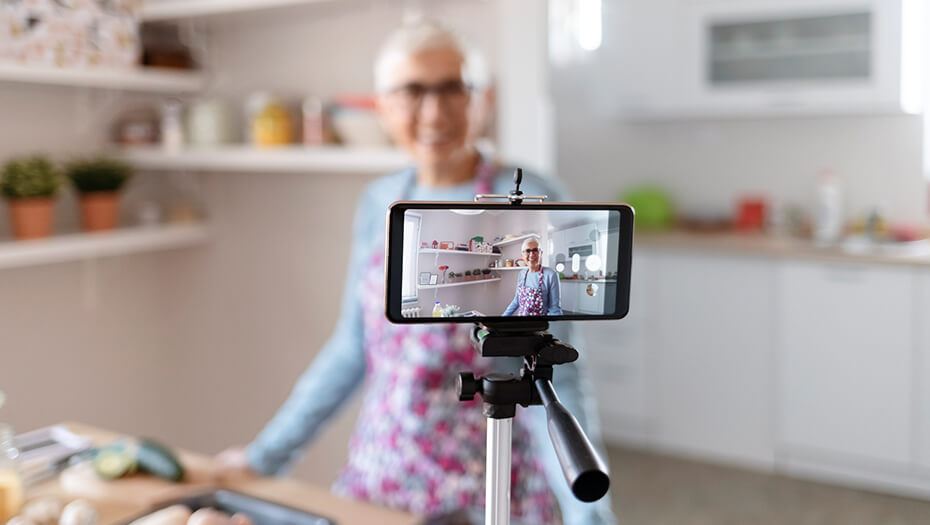How Mobile Marketing and Text Message Advertising Are Evolving in 2020

You need to make a significant impact with the least amount of time and budget invested — but what do you do?
Your success as a marketer relies on your ability to predict what your future and current customers want from you and deliver it before they can ask for it. It's crucial for you to stay on top of trends and take advantage of them before your competitors do.
We've been a leading software provider in the mobile marketing and text message advertising space for a long time, and we've seen trends come and go. We know how to spot what's coming, and we're happy to give you the inside scoop on what to expect in 2020.
Communicating with all these people in any other way would be impractical.
— Atukwe Newell, Managing Partner, UAS Properties (Case Study)
Mobile Marketing and Text Message Advertising: What to Expect in 2020
2020 is going to see the rise of SMS messaging and artificial intelligence (AI) used in marketing and advertising campaigns. If you aren’t implementing these technologies into your current strategy, then it’s time to re-think your ideas.
Keep reading to learn how mobile devices, social media, video content, and advancements in AI are going to impact the marketplace in the new year.
1. The Evolution of Mobile Devices
Mobile devices have come a long way since the first, indestructible Nokia and flip phones were released. Back then, they weren’t connected to the internet, and you could only use them to text or make calls. The most entertaining feature was picking out a new ringtone for every person on your contact list.
Fast forward to today, and now you can browse the internet with apps or voice searches, share a new meme on Facebook, create a new tweet on Twitter, capture high-quality photos and videos, video chat, and purchase products — all from your smartphone, tablet, or even your smartwatch. With so much to do, it’s no surprise that people are spending more and more of their time on these devices every day.
The average smartphone user touches their device 2,617 times a day, with the heaviest users touch their devices 5,427 times per day.
How Consumers Are Making Purchase Decisions
Consumers are utilizing their devices to perform product searches, read reviews, price compare, and find out if your product or service is the best solution for their particular problem and needs.
Their mobile devices are allowing them to make better purchasing choices, and you need to adapt your marketing efforts to these behaviors.
Let’s look at an example.
Becky has a baby on the way, and she needs to purchase a new crib for the nursery. This is her first child, so she has no idea what to buy. She’s standing in the baby aisle of Target looking at their selection, and she has narrowed it down to 3 options.
Now it’s time to pick one. How is Becky going to make this decision?
69% of in-store shoppers would rather consult a product review on their phone than asking a store associate. It is likely that Becky will consult the internet for advice.
With her phone, she stands in the aisle and starts reading reviews on the 3 cribs she has to choose from. They all seem to have reasonably good reviews, but one of them stands out and shines way more than the other 2. This is the crib that Becky will ultimately buy.
How to Leverage Mobile Device Usage for Effective Marketing
People are relying on their mobile devices for day-to-day decision making. It’s important for you to find ways to leverage mobile marketing in your campaigns.
SMS marketing is a great way to get their attention.
- SMS uses their native texting app on their phone, so you can engage with subscribers without requiring them to download new software or take any additional steps.
- You can use texting to reward loyal shoppers with discounts.
- You can send personalized messages to segmented groups on your list.
- It’s an excellent way to increase engagement by sending out surveys, polls, asking for feedback, or running a subscriber-only contest.
- SMS messages are immediate and quick to create. You don’t have to create complicated graphics or long lines of text to get your message across.
- It’s cost-effective in the long run and free to get started.
6 Steps You Can Take to Prepare
Being prepared for mobile market growth is going to be crucial to the success of your business. If you aren’t putting your message out there in the places your customers want to see it, you are missing out on an excellent opportunity to engage and connect with them.
Take these steps to get started with mobile marketing today, so you aren’t left behind in the wave of mobile device innovation.
- Select and sign up for an SMS messaging software account and create your first list of subscribers. EZ Texting offers a free trial with 100 messages to get you started.
- Create a signup campaign to boost your list.
- Integrate your SMS marketing with other campaigns you are running, like emails
- Send out messages for reminders and alerts.
- Create a loyalty program for your subscribers that sends them texts with coupons and discounts.
- Find new ways you can utilize SMS messaging in your marketing efforts to inspire and delight your customers.

2. The Evolution of Social Media
The people have spoken. They want to see less branded content in their news feed and more posts from their friends and family. While this is great for users, it’s not so great for marketing managers like you.
The days of an organic Facebook post or tweet driving thousands of hits to your website are over — unless you have the cash to spend on ads with the platform.
Changes Taking Place
- Facebook changed the news feed to give the people what they want.
- Twitter deleted 70 million suspicious accounts.
- Instagram’s algorithm changes are showing users less branded content.
- Users are concerned about their privacy and mental health. They are ditching services like Facebook and Twitter and using Instagram, Snapchat, or TikTok instead.
How You Can Adapt and Prepare
In one study, 74% of millennials and Gen Z said they’re annoyed by brand targeting in their social media feeds, and 56% have cut back or stopped using social media entirely due to this.
If you want to reach your millennial and gen-z audience, you will have to make your advertisements more personalized and targeted to specific members of your audience. Otherwise, you risk becoming another company that is annoying them with irrelevant ads.
Focus on Connecting With and Engaging Your Audience
- Provide incentives to engage with you by sharing subscriber-only discounts or coupon codes.
- Host a giveaway or contest that encourages your followers to interact with your brand to win.
- Get conversations started with polls, quizzes, or offer discounts for honest feedback on products or services.
Niche down and don’t try to reach everyone.
- Attempting to reach everyone can end in you reaching no one. If you want to spur your audience to action, you have to tailor your content to a smaller, more specific audience.
- Create segments for your newsletter and SMS messaging lists so you can target subscribers by their specific interests.
Don’t sell your products and services - sell a solution to their problem.
- Connect with your readers on an emotional level by telling a story. Show them you understand their struggles and how it makes them feel. Then show them how your product or service can solve their problem.
Integrate SMS messaging with your social media campaigns.
- Sign up for a free trial with EZ Texting.
- Create keywords for campaigns and share them with your followers. Offer incentives for them to follow through. An example of this would be, “Receive a $10 gift card if opt-in to receive text messages. Text IWANTIN to 858585 now.”
- Start a contest on social media and encourage followers to text photos, answers to questions, or submit feedback to your number for a chance to win.
- Create a survey and have followers text your number to start the survey.
a day the average smartphone user touches their device.
3. The Evolution of Voice Search
According to comStore, 50% of all searches will be voice searches by 2020. You have a fantastic opportunity to beat your competition to the punch by optimizing for voice searches now.
How to Optimize For Voice Searches
Just being on page 1 of Google isn’t enough anymore. With traditional, hand-typed searches, consumers enter their query and then are presented with pages of results to choose from.
That isn’t the case with voice searches.
When a user asks a question with voice search, Google picks what it thinks is the best answer, and only one result will be given back. You will need to adapt and strategize for this new way of searching sooner rather than later if you want to stay ahead of the curve.
Use long-tail SEO instead of short keyword phrases.
We use more words and form complete sentences when we speak vs. when we type. Content for text searches is optimized for short keyword phrases, but voice searches will need to be optimized for these longer search queries.
Example: “email marketing” vs. “How do I start an email marketing campaign fast?”
If you are a local business, make sure you are listed online.
The number of local voice searches is expected to increase, and you have to be listed if you want to pop up in results.
Example: “Is there a hardware store near me?”
Write more local content.
As mentioned above, local voice searches are on the rise. The more relevant, local content you can produce, the higher your chances of being found.
Example: “Where can I buy a cast iron pan near me?”
Make use of headings and structure your content.
Google needs to be able to quickly determine if your content is the most relevant result that matches the user's question. Headings tell Google what the important topics and key points of your content are so they can see how it stacks up to the search phrase used.
Google will find and return the most relevant portion of your page for the search query. This may be a subsection in the middle of your content.

4. The Evolution of Video
2005 saw the birth of YouTube, and ever since then, consumers have been consuming video content like never before.
According to a report from HubSpot Research, more than 50% of consumers want to see videos from brands — more than any other type of content.
Consumers spend 1hr 37 min per day watching videos on their mobile devices. With mobile usage at an all-time high and consumers asking for it, you can’t afford to NOT invest in video marketing.
5 Ideas for Video You Can Make
- Create a demo video of your project and send it out to your email or SMS messaging list.
- Show your subscribers how to do something they want to learn.
- Conduct interviews with your customers.
- Make a whiteboard video.
- Give subscribers sneak peeks of your creative process or a behind the scenes look at your business.
5. The Evolution of Artificial Intelligence (AI)
Marketing AI allows you to utilize customer data in ways that wouldn’t be possible without it. In the past, it was buggy and often didn’t work as well as it should. Recent advancements in the industry have improved accuracy by leaps and bounds.
How You Can Use AI in Your Marketing
- Use a CRM software that integrates predictive analytics AI - like Salesforce or Active Campaign.
- Create a paid ad campaign with Google’s Search pages to benefit from Smart Bidding.
- Start using SMS chatbots.
Plan Ahead by Mastering Text Message Advertising
Mastering your SMS advertising strategy will help you expand your reach and pump up engagement with your customers. It’s a cost-effective and straightforward way to reach your customers.
Learn how you can get started creating an epic SMS ad campaign with our FREE guide. Download it now and get started today!
See other resources related to:

